RIBBON CADDIS
The first time I saw a grannom caddis emerge onto the water surface I prepared to defend myself! It was huge. One of the biggest flies I've seen on any British water. At over 1¼" they are the largest of our caddis flies, at the other end of the scale they are impossible to imitate on a hook.
When a caddis gets dislodged or begins its swim to the surface it is at its most vulnerable to predation by trout. Not only during a hatch do imitations of caddis pupa produce fish, they are "remembered" by trout as a good meal, so they will grab them whenever they get the chance. This makes imitations of caddis pupa great searching patterns, Often my first choice when there is no hatch going on.
If it is true that trout obtain most of their food sub surface, then it makes sense to have good imitations of larval and pupal stages of the most prolific insects. Here is a caddis pupa that ticks many of the boxes. I am presenting it here as a basic chassis of a fly for you to make your own additions to. Things like wing buds, antennae etc. can be added if you feel the need. I tend to keep them simple, just a juicy grub for the fish to snack on.

Materials:
- Hook: Any grub hook in an appropriate size.
- Weight: (if required) A few turns of lead or none toxic wire.
- Thread: Usually a neutral colour in 6/0 or 8/0. (You will not see it).
- Body: Nymph Skin (available in many colours but here I've used yellow).
- Rib: Stripped organza ribbon.
- Thorax cover: Nymph Skin.
- Legs: Partridge neck feather.
- Thorax: A touch of loose dubbing, Here I'm using a mix of hare's mask and CDC fibres.
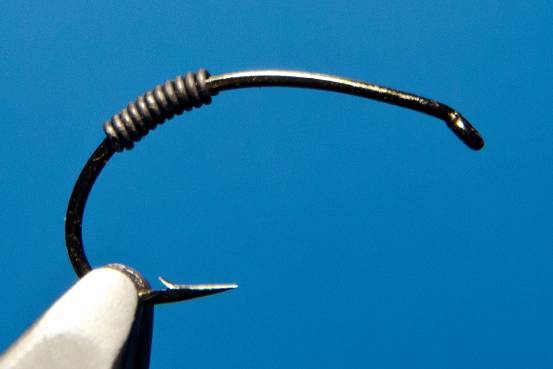
The weight is applied in the position shown. It is an unusual place to add weight but it helps with forming the fat abdomen.
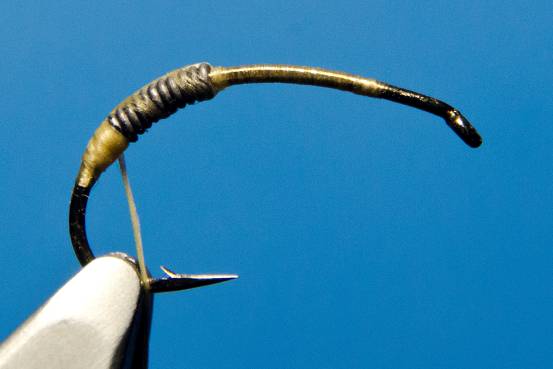
Start the thread and run down the hook shank, over the wire in open turns to the back of the weight. Once there build a ramp of thread to smooth the weight. (Always build this ramp first, if you try to build the one the other side of the wire you will end up pushing the wire along the hook shank).
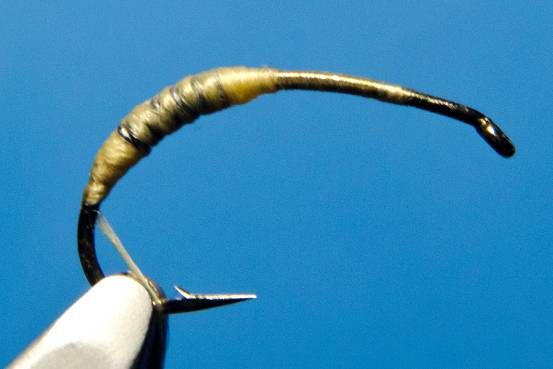
Then back over the wire to build the front ramp.
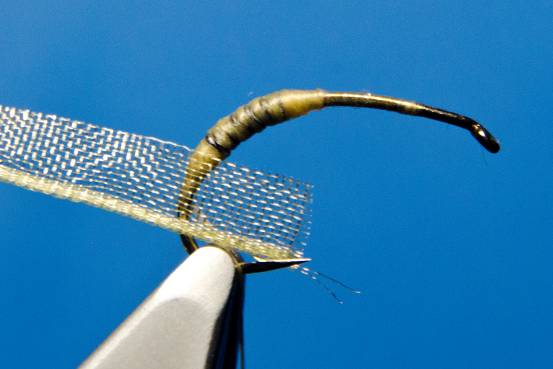
Park the thread at the "tail" end of the fly. Next we prepare the body materials. In most cases it is best to tie them in in reverse order to the order they will be wound. So the first thing to do is get the "rib" ready.
The rib is organza ribbon. First cut a strip from the edge of your ribbon. The sealed edge of the ribbon, known in the trade as a "salve edge" will form the rib with the weft of the ribbon forming the fringe. The width of the strip you cut will depend on the size of fly you are tying. This is a size 10 so my strip is about 3/16" (4mm) wide, or about ½ the hook's gape.
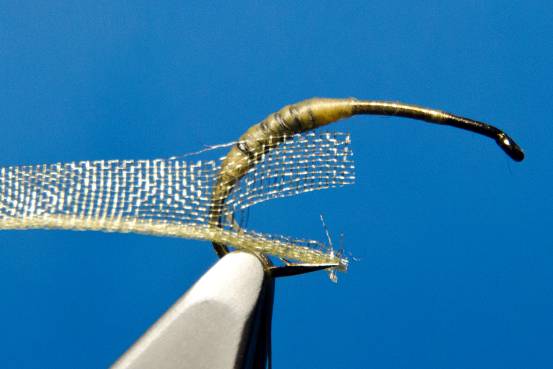
Once you have your strip make a cut from one end hard against the salve edge for about ¼ inch - (6mm)
This cut will serve two purposes. It gives you "handles" to use to strip the weft from the wharf, and provides a section to use to tie in the rib. Grip the two sides of the cut you just made and gently pull them apart.
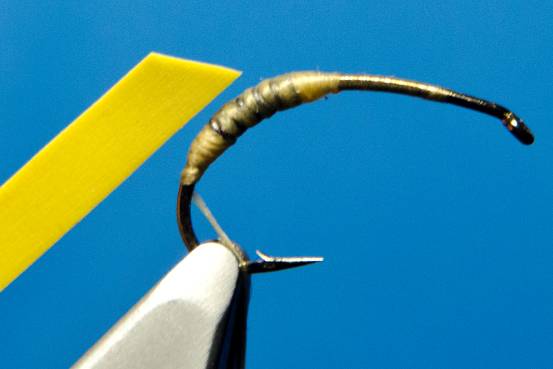
You can tie the rib in now. The Nymph Skin is easy to prepare. Simply make one cut across the end of it at an angle of about 20˚.
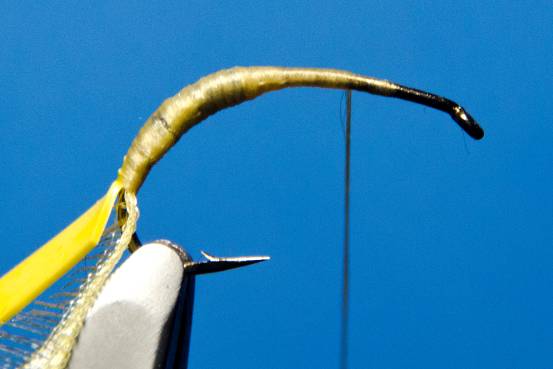
Catch this in by the point you have created.
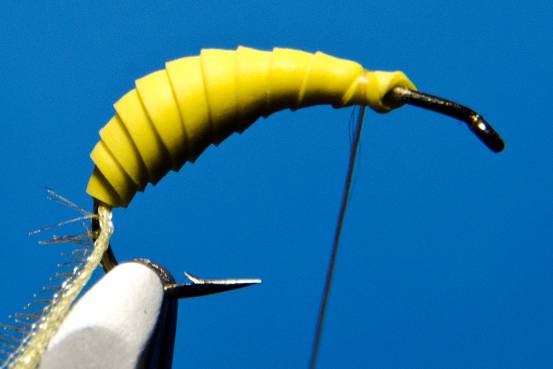
Take the thread forward to where you want the thorax to begin. Then follow it with the Nymph Skin. Hold the Nymph skin under slight tension. After the first turn relax this tension for the next couple of turns. After that steadily increase the tension as you wind forward. You should end up with an abdomen like this. Tie off with a couple of turns and trim out the excess.
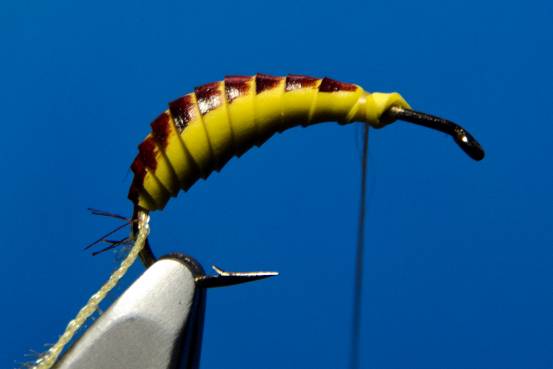
Before you wind the rib a nice touch is to run a marker pan down the back. Work from the eye to the tail when doing this. Don't go the other way or the ink will run around the edge of the nymph skin and you'll end up with a mess.
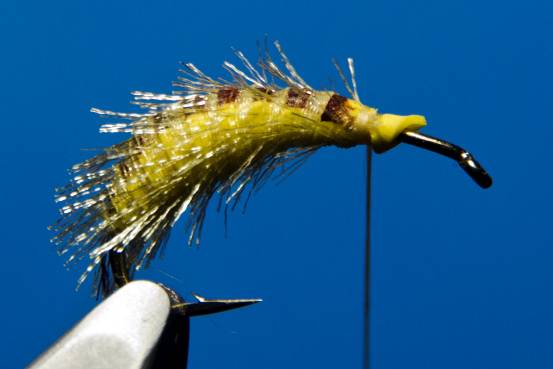
Next wind the rib, following the "steps" in the Nymph Skin abdomen. When you reach the thread tie this off and trim out the excess.
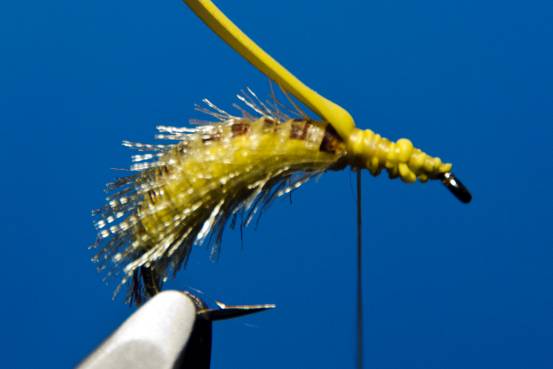
Now is when you can add any "extras" you feel are essential. I'll just finish with my normal thorax and legs.
Tie in a thorax cover. You'll have Nymph Skin handy so why not use that.
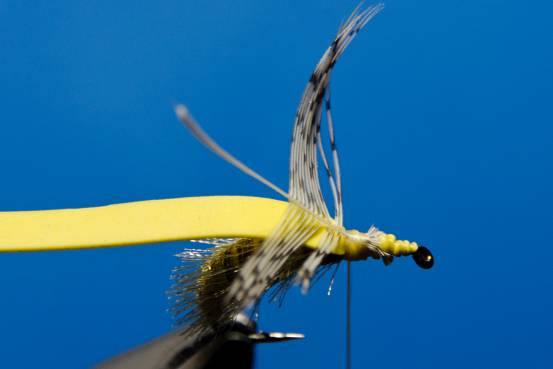
Prepare a partridge hackle by stripping the soft fibres off and separating out the tip. Tie it in by the tip.
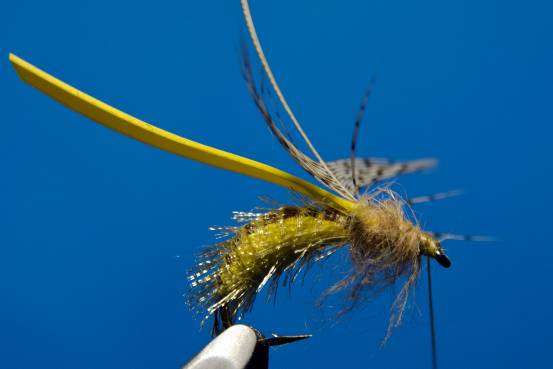
Dub the thorax.
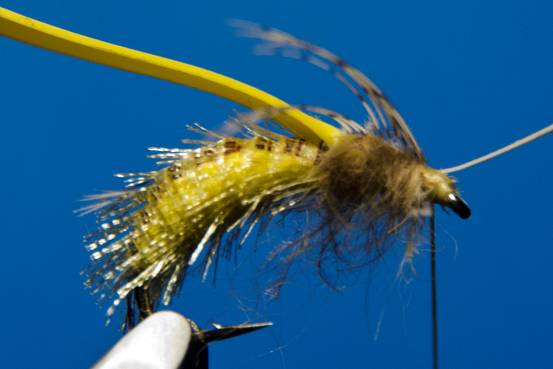
Pull the feather forward and tie down behind the eye.
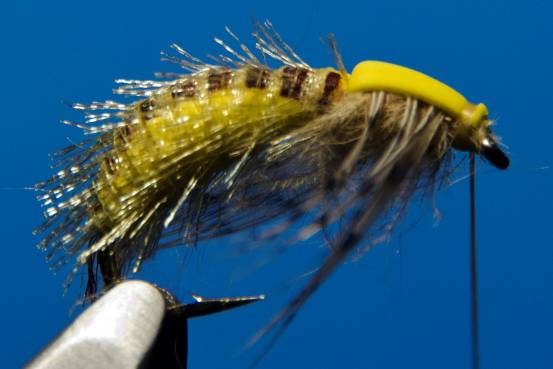
Trim out the stem and pull over the thorax cover. Tie it down at the head.
I like to colour the head nice and dark. To do this after forming the head isn't easy. There is an easy way though. Before forming your whip finish colour the thread with the marker pen you used for the back. Then use the coloured thread to make the whip finish.
And there you have it.
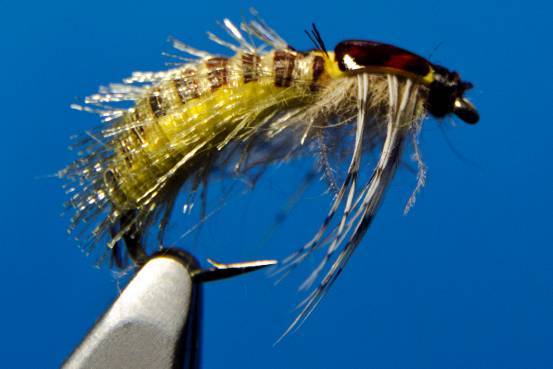
Cheers,
Alan.
For more great info, check out:
Beginning Fly Tying | Intermediate Fly Tying | Advanced Fly Tying.
